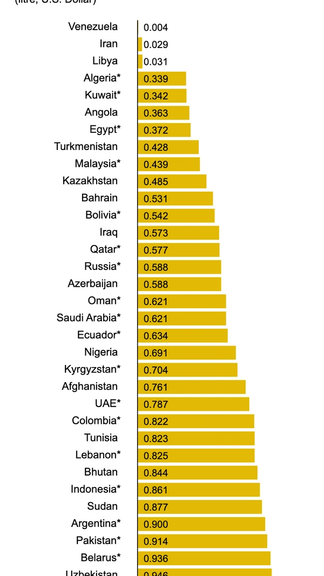Iran Holding Nighttime Security Drills At Gas Stations

Amid reports of imminent gasoline price rises and rationing in Iran, the regime has put an unknown number of fuel stations on security alert.

Amid reports of imminent gasoline price rises and rationing in Iran, the regime has put an unknown number of fuel stations on security alert.
According to Iran International sources, regime security organizations including the Supreme National Security Council, have identified sensitive and strategic gas stations vulnerable to riots and conducted security drills in the middle of the night.
In November 2019, a government decision to increase fuel prices by 50–200 percent triggered a cycle of protests and unrest across the country that lasted for over two weeks. During this time, angry protesters and suspected government provocateurs torched hundreds of gas stations, banks, and government buildings.
One of the main reasons that the Islamic Republic has not managed to increase prices in the midst of the current economic crisis is its being engrossed in the worst wave of unrest in years following the death in custody of Mahsa Amini in September. Fuel price rises risk fanning the flames of unrest further.
The regime, which has one of the world's largest oil and gas reserves, sells gasoline at extremely low, subsidized prices, charging less than 10 US cents per gallon, or less than 3 cents per liter, while neighboring oil-producers have much higher prices, in line with international market rates. Second only to Venezuela, Iran has the world’s cheapest gasoline price.

For years there has been talk of adjusting prices, but since 2018 Iran’s currency has dropped 12-fold and any increase needs to be huge to be meaningful in US dollars.
As part of the new plan, which has been piloted in a number of small cities, citizens are still allowed to buy 60 liters (15.8 US gallons) of gasoline per month at the cheap price of 15,000 rials per liter, or less than 3 US cents. The new regulation reportedly caps the more premium gasoline at 150 liters (40 gallons) per individual per month.
There are conflicting reports about the timing or the exact details of the new plans with unconfirmed reports that the new regulations will take effect gradually and some others claiming that there will not be any cap on the more expensive gasoline.
Hossein Aghayan, a former director of the supply department of the National Iranian Oil Refining and Distribution Company, said a major worry for the regime now is controlling the supply chain to prevent lines forming at gas stations across the country.
In addition to extremely low prices that do not encourage saving fuel, Iran also faces gasoline and diesel shortages due to a lack of refining capacity. The low prices also lead to millions of liters of fuel being smuggled out of Iran daily, part of a large-scale global smuggling network.
Iran’s heavy subsidies for fuel and electricity cost the country at least $50 billion a year, while the government struggles to secure foreign currencies amid US economic sanctions.
In March, Iran International revealed a classified document outlining the proceedings of a meeting at the presidential office in late February which revealed that strategic fuel reserves being at a dangerously low level, forcing major repairs at refineries to be delayed allowing maximum production for the time being. Officials were told to avoid any public remarks or suggestions that could be interpreted as an intention to raise current fuel prices for fear of inflaming public discontent.
While the country is hugely dependent on the revenues from crude oil exports, due to sanctions and mismanagement, it has failed to modernize the energy sector in general, with power shortages most of the year. Systemic corruption also further cripples the weak system. The situation has been grave in recent years but since the administration of Ebrahim Raisi assumed office in 2021, the entire energy management system is going haywire even faster, drawing backlash from not only the public but even regime officials.